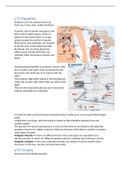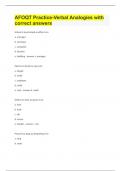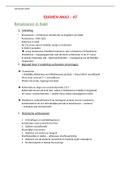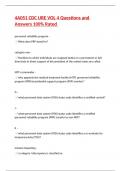College aantekeningen
Notes lectures Infectious agents and immunology (B2AI)
- Instelling
- Universiteit Leiden (UL)
Notes of all lectures from the module Infectious Agents and Immunology (B2AI), bachelor year 2 Biomedical Sciences. Lectures were given by PH Nibbering, PJ Bredenbeek, B Everts, BMD Franke-Fayard, RA Gruters, CH Hokke, M Kikkert, EJ Kuijper, P Lennard, THM Ottenhoff, M Roestenberg, HH Smits, WK Sm...
[Meer zien]









